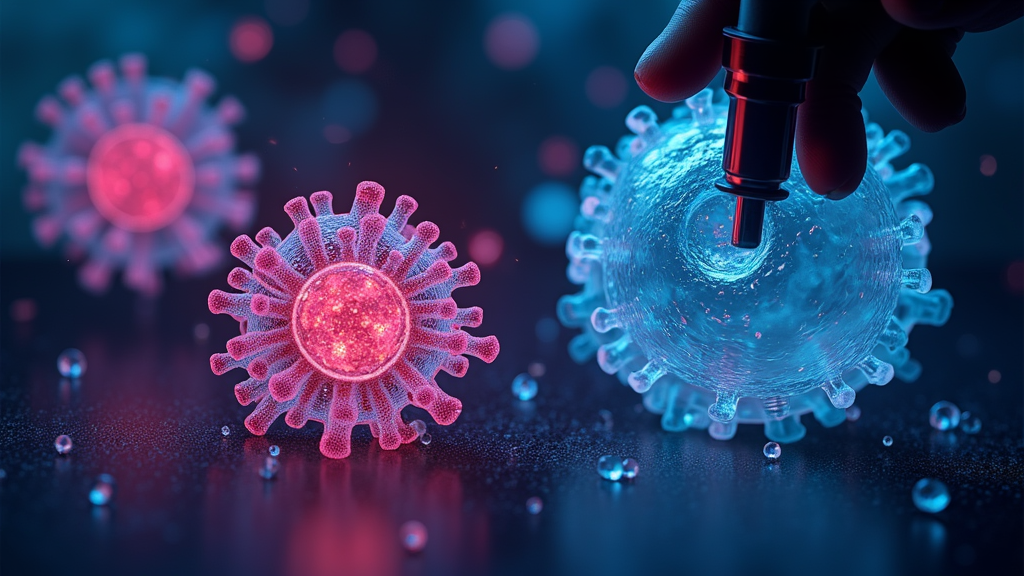Cancer can feel like an overwhelming subject at first. I have seen many people wonder what exactly cancer is and how it even begins. Breaking down the basics can help make this huge topic feel a little more manageable. I’m sharing what I know, along with clear explanations and real-world examples, so you get a solid understanding of what cancer really means and how it develops in the body.

What Is Cancer?
Cancer is a group of diseases that all have one thing in common: they start when cells in the body begin to grow out of control. I often describe normal cells as pretty well behaved. They grow, do their job, and when they are old or damaged, they die off on their own. Cancer cells break those rules. Instead of dying when they should, these cells keep growing and dividing in a way that the body can’t control.
The human body is made up of trillions of tiny cells. These cells combine to make up tissues and organs, such as your liver, lungs, or skin. Every cell has a specific job and follows certain instructions that are built into its DNA. Cancer begins when changes, sometimes called mutations, happen in that DNA, causing a cell to stop working normally.
How Does Cancer Develop?
I’ve learned that cancer doesn’t just show up overnight. It develops through a process that often takes years, starting with just one cell that goes rogue. Here’s how the process typically occurs in a simple way:
- Normal cell division: Healthy cells grow and divide as the body needs them, then stop when enough new cells are made.
- Mutation: Something causes changes (mutations) in the DNA of a cell. This could happen by chance due to exposure to things like tobacco smoke, radiation, certain chemicals, or even some infections.
- Uncontrolled growth: The mutated cell ignores normal signals to stop dividing. It doesn’t follow the rules, so it keeps multiplying.
- Tumor formation: These abnormal cells gather together, forming a lump or mass. When this mass grows in solid tissues, it’s called a tumor. Some cancers, like leukemia, don’t form solid tumors but spread through body fluids like blood.
Not every mutation leads to cancer, though. The body has several ways to repair or destroy cells that don’t look right. When these systems fail, that’s when cancer can take over.
Different Types of Cancer
Cancer is not just one disease. I often get questions about whether cancer in the breast is the same as cancer in the lung or the skin. The answer is no. There are over 100 different types of cancer, and they get their names based on where they start. For instance:
- Carcinomas: These start in cells that cover the surfaces of the body (like skin, lungs, breasts, and organs).
- Sarcomas: These begin in bone, muscle, fat, or cartilage.
- Leukemias: These grow in the blood or bone marrow, often not forming solid tumors.
- Lymphomas: These start in the immune system, usually in lymph nodes.
Each type acts and spreads in different ways. Treatments also depend on the specific type, location, and stage.
Risk Factors and How Cancer Starts
Many people ask whether certain habits or environmental exposures can put you at higher risk for cancer. I’ve researched that a risk factor is anything that makes it more likely for someone to develop cancer. Some common risk factors include
- Smoking tobacco
- Excessive alcohol use
- Unprotected sun exposure (ultraviolet radiation)
- Exposure to some viruses or bacteria
- Family history of cancer
- Obesity or poor diet
Just having a risk factor does not mean a person will get cancer, and sometimes people who don’t have any risk factors will still develop cancer. Still, limiting exposure to known cancer causes can help lower risk.
Warning Signs and When to Seek Help
Knowing the basic warning signs can help people catch cancer early, when treatment often works best. I usually suggest keeping an eye out for
- Unusual lumps or swellings
- Unexplained weight loss
- Changes in skin, such as new or changing moles
- Ongoing pain that doesn’t improve
- Unexplained bleeding or bruising
- Cough or hoarseness that won’t go away
Having one or more of these symptoms doesn’t mean you definitely have cancer. Still, they’re important to get checked out by a health professional, especially if the symptoms last for several weeks.
Diagnosing Cancer
The process of diagnosing cancer usually starts with a visit to a doctor. I’ve seen that it can involve several tests and steps:
- Physical examination: The doctor looks for lumps, swelling, or other changes.
- Imaging tests: Thingse X-rays, MRIs, CT scans, or ultrasounds can make pictures of the inside of the body.
- Blood tests: Some cancers can be detected or tracked through substances in the blood.
- Biopsy: This means taking a small sample of tissue to look at under a microscope.
It’s normal to feel anxious if cancer is suspected. Having someone to talk to, or getting a second opinion, can be helpful during this stressful time.
How Cancer Is Treated
Treatment depends on the type and stage of cancer. I know that the main goal is usually to remove or destroy the cancer cells while sparing as much healthy tissue as possible. Some common treatments include
- Surgery: Cutting out tumors or cancerous tissue.
- Chemotherapy: Medicines that kill rapidly dividing cells, including cancer cells.
- Radiation therapy: Using high-energy rays to destroy cancer cells in specific areas.
- Targeted therapy: Medicines that zero in on certain characteristics of cancer cells, causing less harm to normal cells.
- Immunotherapy: Boosts the body’s own immune system to attack cancer.
Some people need just one type of treatment, while others have a mix. Research keeps bringing new options, so treatment is always improving. For example, scientists are working on therapies that teach the immune system to recognize and destroy cancer cells even more efficiently. Other advances include less toxic chemotherapies and radiation that pinpoints specific areas, lowering side effects for patients. Access to clinical trials may also give patients the chance to try promising new treatments before they are widely available.
Things That Affect How Cancer Grows
Cancer is complicated, and several things affect how fast or slow it spreads. This is something I came to understand more as I learned about the disease. Some cancers grow slowly and might not need immediate treatment, while others can be much more aggressive. For patients and families, understanding how these factors interact can help make sense of the recommended treatment plans and expected outcomes.
- Type of cancer: Some, like certain skin cancers, often grow slowly. Others, like pancreatic or brain cancer, might spread quickly.
- Stage at diagnosis: If cancer is found early, before it spreads, treatment is more likely to control or even get rid of it.
- Genetics: Some inherited changes make cancer grow or respond to treatment differently.
Doctors use staging systems to describe how far cancer has spread. Early stages usually mean cancer is still in one area. More advanced stages show if it has moved beyond its starting point. The size and spread of the tumor, lymph node involvement, and if there are distant metastases all play into the staging process. Genetic testing can give more information about how a person’s cancer may respond to a certain therapy, which helps healthcare teams personalize treatment for better results.
Frequently Asked Questions
I often hear the same questions about cancer basics. Here are some simple answers to the most common ones:
Question: Can cancer be prevented?
Answer: While no one can guarantee total prevention, staying away from tobacco, eating a balanced diet, protecting skin from the sun, and getting regular checkups can help lower the risk. Vaccines, such as those for HPV and hepatitis B, can also lower the risk of certain cancer types by preventing infections linked to cancer development.
Question: Is cancer contagious?
Answer: Cancer itself does not spread from person to person. Some viruses that increase cancer risk, like HPV, can pass between people, but you can’t “catch” cancer like a cold.
Question: What causes cancer?
Answer: Cancer usually starts with changes in DNA. These changes can be inherited or caused by things like smoking, sun exposure, or certain infections, but often the exact reason can’t be found. Sometimes, a mix of different risk factors works together over a long period to trigger changes that eventually lead to cancer.
Question: How do I know if my symptoms mean cancer?
Answer: Many symptoms can also be caused by less serious problems. The best move is to notice anything unusual and talk to a doctor if a change lasts more than a few weeks. Early checkups can lead to quicker diagnosis and better outcomes if cancer is found.
Living With and Beyond Cancer
A cancer diagnosis can change life in many ways, both physically and emotionally. I’ve seen how support makes a real difference. Doctors, nurses, counselors, family, and friends often play big roles in helping someone through treatment and the recovery process. Coping strategies and staying connected with others can help manage daily challenges.
New treatments and early detection keep improving survival rates. More people are living longer after cancer than ever before. Many move on to lead fulfilling lives, even after diagnosis and treatment. Support groups and survivorship programs help patients adjust to life after cancer and connect with others who truly understand the ups and downs of this experience. Whether someone has finished treatment or is living with ongoing cancer, hope and connection remain powerful tools in facing every step ahead.
